


Myths about autism

There are some myths about autism that should be cleared up. The most important of these is that autism is often believed to be associated with mental retardation. But they are completely wrong. An individual with an extremely high IQ can have intense autistic symptoms.
Autism does not mean mental disability!
Many people do not know that autism is a developmental disorder and is not the same as an intellectual disability. There are young people with both autism and mental retardation, but by the former, we actually mean a developmental disorder of social skills. Many autistic teenagers have average or above-average intelligence.
It is so difficult to notice and identify the problem because autism can be very different from one individual to another. One has a very mild, hardly noticeable problem, and some have a very severe effect – that’s why autism is called “autistic spectrum disorder”.
Characteristics of autism
Nevertheless, some signs can help you recognize this disorder, so if you come face to face with it, you will understand better why an autistic young person does what they do. You will also be able to behave appropriately in the situation.
First, most autistic children avoid the company of others, preferring to be alone because they usually have difficulty communicating with others because they find it difficult to understand the hints and metaphors that other people use daily. Facial expressions do not necessarily mean the same to them as they do to others. To adapt, they need to learn these key cues.
The other big difference lies in the perception of autistic people: many of them report contains much information from their senses, often overwhelmed and confused. In fact, we are also exposed to the same number of stimuli, but our brain classifies and filters them according to their importance. That’s why we don’t become aware of every stimulus – only as much as our brain can still process.
Autism and behavior
Some autistic teenagers are quiet and withdrawn. Because they do not understand the importance of eye contact, they avoid it. Some people find it difficult to pronounce words, and others communicate with broad gestures. There is also an adolescent who is hyperactive due to autism. They don’t know how to manage tensions in a socially acceptable way, so they can become aggressive and have outbursts of anger.
Autistic teenagers generally have difficulty coping with change, so even the slightest change in their daily routine can upset them. In more severe cases, the autistic individual clings to certain objects and ideas and repeats certain habitual movements to exclude the outside world. Repetitive movements can be, for example, shaking hands, bending over, and rocking when nervous.
Understanding is the first step
Young people with autism learn from childhood how to understand the world around them and behave in the way expected by the environment. They don’t lack emotions; they just don’t know how to express them in a way others can understand. During years of work, they develop their ability to express and cooperate. The earlier they start dealing with an autistic child in this way, the greater the chance that he will be successful in social relations later on.
It is important that when we communicate with an autistic individual, we understand the limitations he lives with and recognizes the efforts he makes. Let’s show him patience and acceptance.
If you want to know everything about autism just subscribe
Get all the information from evidence-based materials

Lactoferrin for iron defficiency
Lactoferrin for iron deficiency
Lactoferrin (LF) is an iron-binding glycoprotein found in the milk of mammals such as humans therefore it can help with iron deficiency.

If you are constantly tired or short of breath after a little exercise, you probably have an iron deficiency. SIBO, or a parasitic infection, almost always causes iron deficiency.
If you are iron deficient, you should take LACTOFERRIN along with iron-rich foods to utilize the iron instead of just letting it circulate in your blood and cause oxidative stress.
Symptoms of iron deficiency
- fatigue
- weakness
- headache
- dizziness
- pallor
- hair loss
- palpitations
- throat tightness
- swallowing disorders
- reduction of load capacity
Lactoferrin has been found to exert physiological effects such as antimicrobial and antiviral activity, modulation of cell growth, and immunomodulatory effects. It was also found that the iron binding capacity of LF is about 300 times greater than that of transferrin. (9) It has been confirmed that LF regulates iron absorption.10-13) Recently, oral lactoferrin has been reported to increase serum hemoglobin and total iron in pregnant women.
Anemia is commonly observed in athletes, especially endurance athletes, and is referred to as sports anemia or in children or pregnant women. In particular, long-distance runners who menstruate and strictly control their weight can easily develop sports anemia.
LF significantly improved the hematological parameters. Our results suggest that it might be useful to take not only iron but also LF (an iron-binding protein) for the prevention of iron deficiency anemia.
If ferrous salts are circulating in the blood because the body cannot utilize them, then they are causing severe oxidative stress. Lactoferrin helps to bind and utilize serum iron, therefore also preventing oxidation.
In addition to Lactoferrin, you should do the following to increase your iron levels and improve your iron deficiency:
- Eat foods rich in iron
Meat and eggs
Beetroot
leafy greens
Sesame
Spinach
Sweet potatoes
Pea
Broccoli
Green beans
Turnips
Cereals
Strawberry
Watermelon
Raisins
Dates
figures
Prunes
Sesame - Introducing Huminiqum
- Screening for digestive system inflammations
- Virus removal
- Identification of drugs that inhibit iron absorption
Resources
- https://www.sponser.com/cms/en/about-sponser-com/news/entry/no_cache/1/article/lactoferrin-and-iron/
- file:///C:/Users/User/Downloads/biomedicines-09-00898-v2.pdf
- https://clinicaltrials.gov/ct2/show/NCT03481790
- https://www.ncbi.nlm.nih.gov/pmc/articles/PMC6160582/
- https://pubmed.ncbi.nlm.nih.gov/29059584/
- https://ijma.journals.ekb.eg/article_34024.html

Whey Protein

Terra Origin – whey protein
Probably you did not know until now, that whey protein isolate could increase intracellular GSH (glutathione) concentrations and protect against oxidant-induced cell death all over the body, including gut cells.
Whey Protein assists the body in maintaining optimal concentrations of Glutathione (GSH) by supplying the precursors required for intracellular glutathione synthesis.
Glutathione is a tripeptide made intracellularly from its constituent amino acids L-glutamate, L-cysteine, and glycine. The sulfhydryl (thiol) group (SH) of cysteine is responsible for the biological activity of Glutathione. The provision of this amino acid is the rate-limiting factor in glutathione synthesis by the cells since bioavailable cysteine is relatively rare in foodstuffs.
Glutathione is a master antioxidant and has several health benefits; among others, Glutathione is present in the entire intestinal mucosa, where it traps and neutralizes potential toxins before they are absorbed into the body. Glutathione protects the intestinal wall, which, if weakened, can lead to a leaking / permeable intestinal problem. See more benefits here: Glutathione
Resources
Main resources
https://pubmed.ncbi.nlm.nih.gov/12537959/
file:///C:/Users/User/Downloads/JournalofWoundCareGutmanpapercopy.pdf
https://www.frontiersin.org/articles/10.3389/fpsyt.2021.669089/full
https://www.pdr.net/full-prescribing-information/Immunocal-cysteine-257

Butyric acid

Butyric acid is a short-chain fatty acid believed in providing optimal benefit to the gastrointestinal tract. It is highly produced in the gut by bacterial fermentation of undigested carbohydrates such as dietary fiber.Butyric acid has been scientifically shown to support and promote the health of the GI tract and microbiome.

Butyrate is an essential source of energy for the intestinal epithelium. It plays a crucial role in regulating the proliferation and differentiation of epithelial cells, protecting immune function and mucous membranes. Butyrate has antitumor activity and antimicrobial effect against the most enteric pathogens, thereby significantly improving the composition of gut microflora.
Indigestible carbohydrates (prebiotics) increase colonic butyrate concentration, which is thought to be responsible for its beneficial effects. In inflammation caused by oxidative stress, damage to the integrity of cell-cell connections and an increase in cell permeability may occur, depending on the extent and duration of the oxidative effect.
The therapeutic value of the protective n-butyrate improves the intestinal epithelium’s barrier function, maintains a healthy intestinal flora, and promotes the regeneration of intestinal epithelial cells.
Butyric acid treatment
Decrease in cell layer resistance induced by acute oxidative stress after low-dose butyrate treatment decreased, indicating that the role of a mechanical barrier is strengthened. Based on experimental results, the composition of the intestinal flora has become favorable.
The number of beneficial lactic acid bacteria and the amount of L-lactic acid they produce in the small intestine also increased. Butyrate affects the coliform bacteria; it can also be used effectively to prevent and overcome the development of infectious conditions in the intestinal tract.
Butyrate controls pathogenic bacteria through regulating intestinal oxygen availability. Several studies have reported another important mechanism where butyrate can indirectly control pathogenic bacterial overgrowth, i.e. contributing to intestinal oxygen availability
Specific benefits of Butyrate for the gut:
Maintenance of normal intestinal bacteria
Increased absorption of macronutrients
It is an essential element of intestinal homeostasis
Improves tight junctions in leaky gut
Improves the mucus layers of the gut
Helps gut cells to kill pathogens
Keeps the oxygen levels in the colon low
Regeneration of the intestinal mucosa
Reduces the incidence of IBS symptoms
Intestinal pain after antibiotic treatment
But Butyrate has shown benefits for the whole body
Supports mast cells and modulates histamine
Supports the immune system by lowering inflammation and helping reduce autoimmunity
May improve skin issues
May help with allergies and asthma
Can protect against alcohol-induced leaky gut and inflammation
It is considered cancer protective has shown anticancer effect
In mice, studies showed improvement in insulin sensitivity, mitochondrial density, and satiety after eating
In mice, research showed it helped the brain recover from strokes
Support weight loss with increasing Bacteroidetes in the gut. – Firmicutes and Bacteroidetes are two major groups in the gut. Having more Firmicutes than Bacteroidetes is associated with weight gain and obesity.
How it works:
4 levels of leaky gut:
Loosening of the tight junctions in the gut lining – allows food and other things to pass through to the bloodstream
Loss of mucus layer in the gut
Low good bacteria species
Loss of ability to kill pathogens in the gut
Butyrate’s effect on leaky gut:
Improves the tight junctions in the gut lining
Supports healing mucus layers in the gut
Increases good bacteria in the gut
Supports cells to kill pathogens in the gut
Butyrate supports the gut at the cellular level.
Studies have shown that people who have the following conditions tend to be low in butyrate:
Inflammatory Bowel Disease
Crohn’s Disease
Ulcerative Colitis
Irritable Bowel Syndrome (IBS)
IBS-C (constipation-dominant)
IBS-D (diarrhea-dominant)
Type 1 diabetes
Obesity
Rheumatoid Arthritis
Parkinson’s DiseaseHo
Children with allergies
How do you know whether or not you have healthy butyrate levels?
Find out the signs of low butyrate!
To have good butyrate levels, you need to know if you have the suitable microbiome species in your gut and if you need to eat enough fibers or to be fermented, and during this process, butyrate will be produced. Your butyrate levels wcorrectecrease if you don’t have the right species of bacteria or enough prebiotics in your diet.
How do you fix your butyrate levels?
You need to have butyrate-producing bacteria, but unfortunately, only one of these bacteria is available commercially – Lactobacillus rhamnosus.
So, unfortunately, there is no good recommendation to increase your butyrate levels, so you need to focus on fiber and prebiotics.
What to do, then?
You have to eat a variety of vegetables.
Increase your intake of resistant starch, but if you don’t tolerate fiber and starch, it can be a problem and leads to a vicious circle.
The only thing you can do is choose the correct type of butyrate supplement.
When choosing, you need to consider the…:
- type of butyrate is very fragile; butyrate needs to bond with salt that stabilizes it. But research shows that tributyrin is more potent and doesn’t require digestion to break apart the chemical bonds.
Plus, some research suggests tributyrin is safer for human consumption than butyrate salts. - the butyrate delivery: Butyrate will be broken down in the stomach and won’t reach the gut. To avoid this, you need to choose liposomal or so-called enteric delivery. Unfortunately, the liposomal butyrate is very smelly
- purity (without additives)
- easy to use
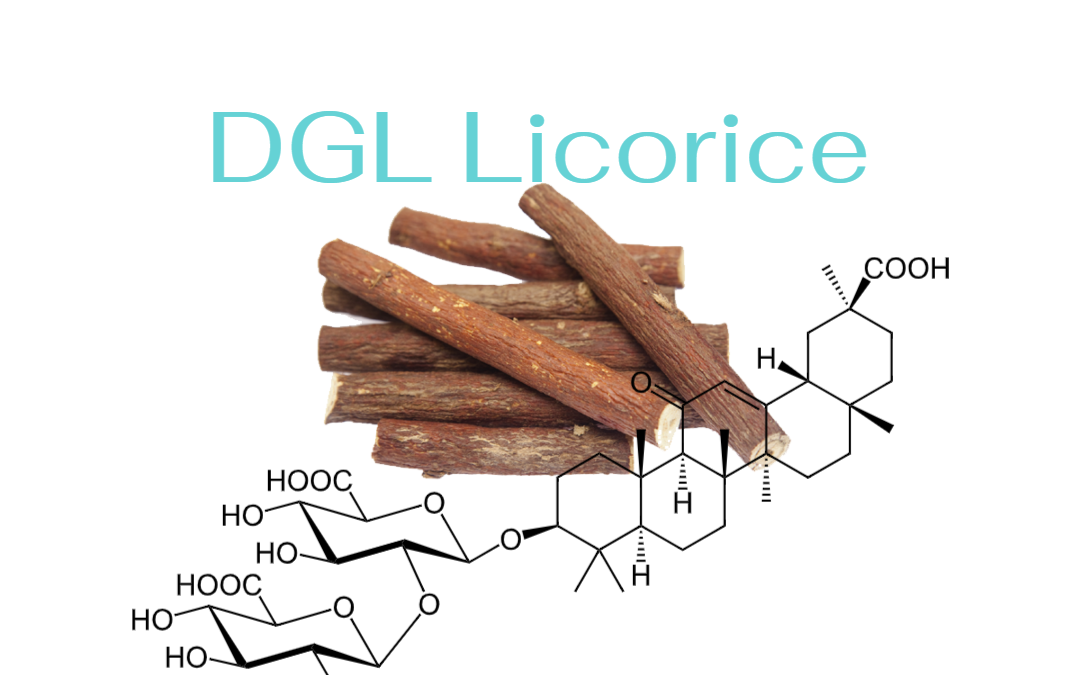
DGL Licorice
DGL Licorice

There is no person who has not suffered from stomach upset at least once in their life.
There can be various symptoms of this through acid overload to stomach pain and acid regurgitation.
These can cause, of course, various acute and chronic diseases, all of which are: gastritis, gastric ulcer, and so on.
Gastric complaints are often caused by an imbalance between the acidity of the stomach and its ability to protect the stomach from the irritating effects of the acids. The presence of some harmful bacteria can also cause stomach upsets. The stomach, which is produced by millions of cells on the stomach wall and is called a mucin, is responsible for protecting the stomach.
Synthetic drugs usually neutralize acid, but the body needs it to digest food. The relief of pain caused by acid overload or stomach ulcers is achieved by taking medications that involve the stomach and gut mucosa, which also prevents digestion. These drugs eliminate the symptoms in the short term, but have harmful effects in the long run.
What is DGL – Licorice Root Extract?
DGL is a de-glycyrrhizinic licorice root, which means that the harmful glycyrrhizin has been removed from it. DGL thus provides a natural, unique and effective solution to stomach problems.
A study in 16 patients with severe stomach problems showed that taking 360 mg DGL 3 times a day (with 3 main meals) reduced symptoms by an average of 78%.
However, another study showed that DGL – Licorice Root Extract 760 mg, also 3 times a day, had the same effect as the medicines used for the same purpose (cimetidine), but without the side effects.
Licorice root, which is considered one of the world’s oldest herbal remedies, comes from the root of the licorice plant. Licorice grows in parts of Europe and Asia. The chemicals in licorice are thought to decrease swelling, decrease cough, and increase the chemicals in our body that heal ulcers.
Properties and effects of DGL licorice:
- The flavonoids in the composition help stop excessive acid production
- It increases blood circulation at the level of stomach-producing cells in the stomach wall
- It increases the production of gastric mucus, which protects the stomach wall
- It promotes the growth of new mucosal cells
- DGL is de-glycyrrhizinated to avoid side effects
How does licorice work?
The success of this is not only due to the fact that it does not completely inhibit the production of acid in the stomach, but stimulates mucin production and the formation of mucin-producing cells by stimulating blood circulation at the level of the stomach wall.
The only problem to long-term use is glycyrrhizin, which can increase blood pressure and water retention. However, if this ingredient is removed, this undesirable side effect will also disappear.
Resources
[1]
Wijendran V, Huang MC, Diau GY, et al. Efficacy of dietary arachidonic acid provided as triglyceride or phospholipid as substrates for brain arachidonic acid accretion in baboon neonates. Pediatr Res 2002;51:265-272.
[2]
Goustard-Langelier B, Guesnet P, Durand G,et al. n-3 and n-6 fatty acid enrichment by dietary $sh oil and phospholipid sources in brain cortical areas and nonneural tissues of formula-fed piglets. Lipids 1999;34:5-16.
[3]
Maki KC, Reeves MS, Farmer M, et al. Krill oil supplementation increases plasma concentrations of eicosapentaenoic and docosahexaenoic acids in overweight and obese men and women. Nutr Res 2009;29:609-615.
[4]
Bunea R, El Farrah K, Deutsch L. Evaluation of the effects of Neptune Krill Oil on the clinical course of hyperlipidemia. Altern Med Rev 2004:9:420-428.
[5]
Sampalis F, Bunea R, Pelland MF, et al. Evaluation of the effects of Neptune Krill Oil on the management of premenstrual syndrome and dysmenorrhea. Altern Med Rev 2003;8:171-179.
[6]
Deutsch L. Evaluation of the effect of Neptune Krill Oil on chronic inflammation and arthritic symptoms. J Am Coll Nutr 2007:26:39-48.
[7]
Chang JP, Chen YT, Su KP. Omega-3 polyunsaturated fatty acids (n-3 PUFAs) in cardiovascular diseases (CVDs) and depression: Cardiovasc Psychiatry Neurol 2009;2009:725310. Epub 2009 Sep 27.
[8]
Breslow J. n-3 fatty acids and cardiovascular disease. Am J Clin Nutr 2006;83:1477S-1482S.
[9]
Calzolari I, Fumagalli S, Marchionni N, DiBari M. Polyunsaturated fatty acids and cardiovascular disease. Curr Pharm Des 2009;15:4094-4102.
[10]
No authors listed. Phosphatidylcholine. Altern Med Rev 2002;7:150-154.
[11]
Naguib YM. Antioxidant activities of astaxanthin and related carotenoids. J Agric Food Chem 2000;48:1150-1154.
[12]
Tso P, Drake DS, Black DD, Sabesin SM. Evidence for separate pathways of chylomicron and very low-density lipoprotein assembly and transport by rat small intestine. Am J Physiol 1984;247:G599-G610.
[13]
Amate L, Gil A, Ramirez M. Feeding infant piglets formula with long-chain polyunsaturated fatty acids as triacylglycerols or phospholipids influences the distribution of these fatty acids in plasma lipoprotein fractions. J Nutr 2001;131:1250-1255.
[14]
Tandy S, Chung RW, Wat E, et al. Dietary krill oil supplementation reduces hepatic osteatosis, glycemia, and hypercholesterolemia in high-fat-fed mice. J Agric Food Chem 2009;57:9339-9345.
[15]
Alberts B, Johnson A, Lewis J, et al. Molecular Biology of the Cell. 4th ed. New York, NY: Garland Science; 2002
[16]
Else PL, Hulbert AJ. Membranes as metabolic pacemakers. Clin Exp Pharmacol Physiol 2003;30:559-564
[17]
Kidd PM. Omega-3 DHA and EPA for cognition, behavior, and mood: clinical findings and structural-functional synergies with cell membrane phospholipids. Altern Med Rev. 2007 Sep;12(3):207-27.
[18]
Konagai C, Yanagimoto K, Hayamizu K, Han L, Tsuji T, Koga Y. Effects of krill oil containing n-3 polyunsaturated fatty acids in phospholipid form on human brain function: a randomized controlled trial in healthy elderly volunteers. Clin Interv Aging. 2013;8:1247-57.
[19]
Ebrahimi M, Ghayour-Mobarhan M, Rezaiean S, et al. Omega-3 fatty acid supplements improve the cardiovascular risk profile of subjects with metabolic syndrome, including markers of inflammation and auto-immunity. Acta Cardiol. 2009 Jun;64(3):321-7.
[20]
Derosa G, Cicero AF, Fogari E, et al. Effects of n-3 PUFAs on postprandial variation of metalloproteinases, and inflammatory and insulin resistance parameters in dyslipidemic patients: evaluation with euglycemic clamp and oral fat load. J Clin Lipidol. 2012 Nov-Dec;6(6):553-64.
[21]
Spencer M, Finlin BS, Unal R, et al. Omega-3 fatty acids reduce adipose tissue macrophages in human subjects with insulin resistance. Diabetes. 2013 May;62(5):1709-17.
[22]
Yan Y, Jiang W, Spinetti T, et al. Omega-3 fatty acids prevent inflammation and metabolic disorder through inhibition of NLRP3 inflammasome activation. Immunity. 2013 Jun 27;38(6):1154-63.
[23]
Valensa. FlexPro MD Clinical Trial Overview and Results. (Data on File.) 2011
[24]
McCann JC, Ames BN. Is docosahexaenoic acid, an n-3 long-chain polyunsaturated fatty acid, required for development of normal brain function? An overview of evidence from cognitive and behavioral tests in humans and animals. Am J Clin Nutr 2005;82:281-295.
[25]
Stevens LJ, Zentall SS, Abate ML, et al. Omega-3 fatty acids in boys with behavior, learning, and health problems. Physiol Behav 1996;59:915-920.
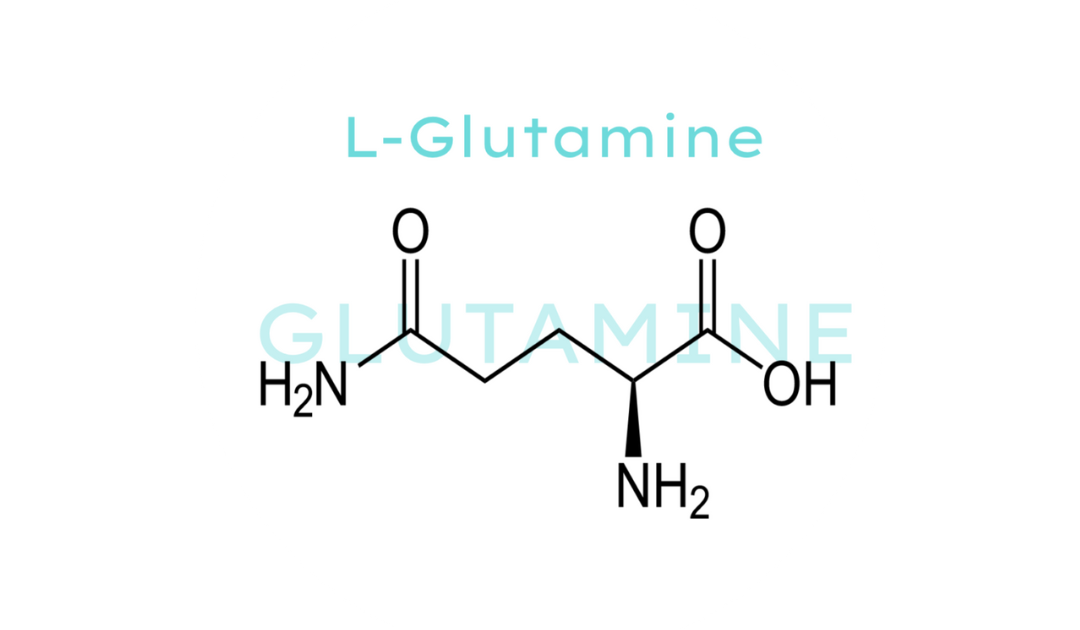
L-Glutamine
L-glutamine
L-glutamine, the universal amino acid.
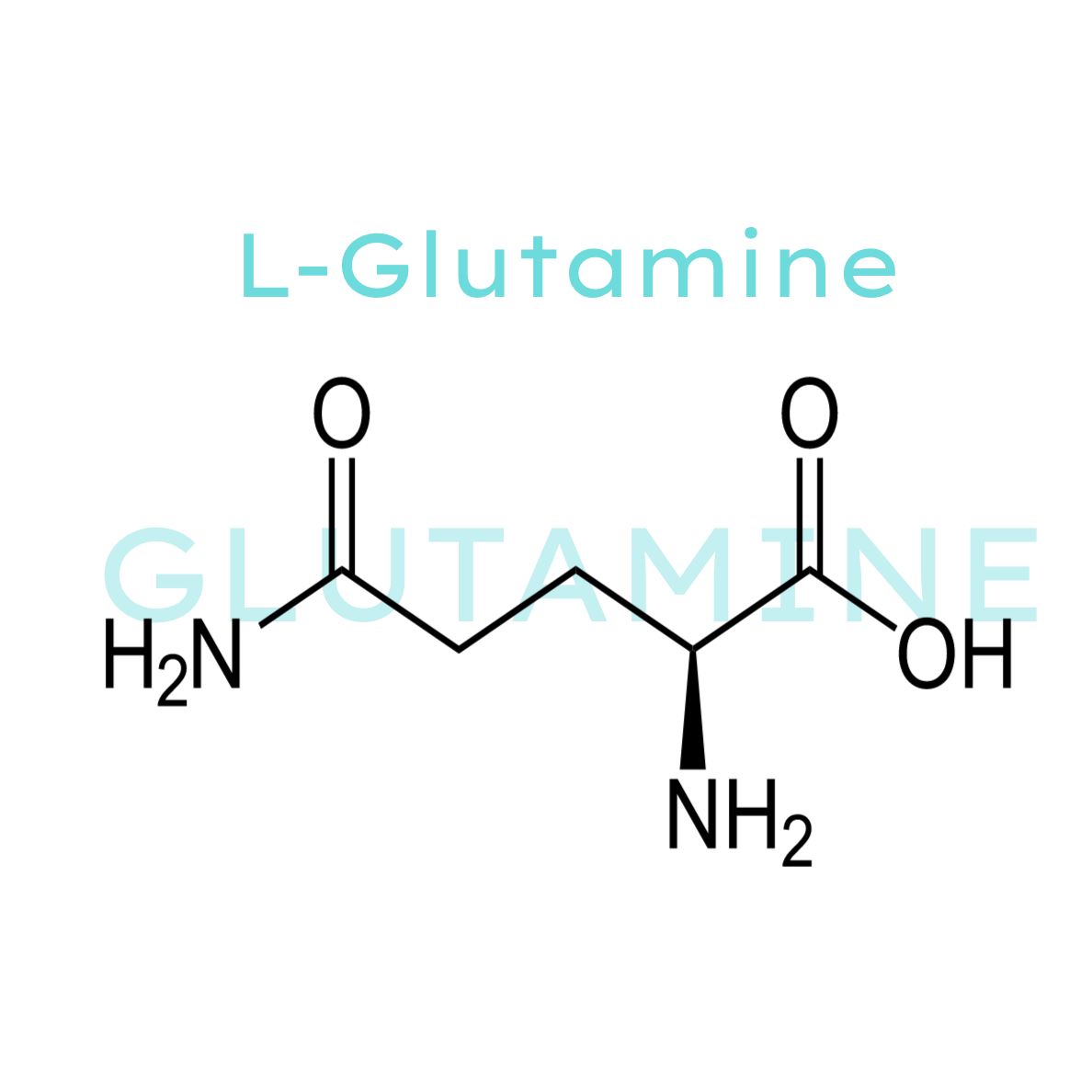
L-glutamine is the most common amino acid in the bloodstream, accounting for 30-35% of the amino acid content of the blood.
This is a well-known and popular dietary supplement not only for athletes but it is an effective amino acid for gut regeneration in SIBO.
What is glutamine?
L-glutamine is the most common amino acid in the bloodstream, accounting for 30-35% of the amino acid content of the blood. It is a conditionally essential amino acid because it is used in large amounts by our body.
It is found in animal and plant proteins, in the form of supplements, and is widely popular in the fitness community and among those who lead a healthy lifestyle. It is also found in large amounts of casein and whey protein.It is essential to know that most people do not get enough this amino acid from food.
Therefore, dietary supplementation is an excellent way to strengthen the immune system and improve the ability to fight infections and diseases.
Benefit of L-glutamine
Glutamine has several physiological effects that research has confirmed in turn that even a person living an average life should have enough reason to pay more attention to this amino acid.
1. Improves gastrointestinal health
This amino acid is good for health if you have gastrointestinal problems, such as irritable bowel syndrome (IBS), inflammatory bowel diseases such as Crohn’s disease, ulcerative colitis, diverticulitis, diverticulitis, permeable bowel, or any problem related to leaking bowel. (e.g., joint pain, rosacea, or autoimmune response).
We regularly need a certain amount of this mino acid because it is an essential nutrient for the gut to rebuild and regenerate. It is worth noting that a man famous for discovering the Krebs cycle (also known as the “citric acid cycle”) was the first to suggest L-glutamine treats intestinal problems.
Sir Hans Adolf Krebs – a German-born British biochemist who won the Nobel Prize in 1953 – found that it helped improve a healthy gut immune response.
A study published in the journal Clinical Immunology found that L-glutamine normalizes the effects of the TH2 immune response that stimulates inflammatory cytokines. The result of L-glutamine in these studies shows that it reduces intestinal inflammation and may help recover food sensitivity.
2. Helps with leaky gut and ulcers
Millions of people struggle with leaky gut syndrome, which is today the leading cause of autoimmune disease. Leaky gut can cause thyroid problems such as Hashimoto’s disease; contributes to arthritis, skin problems such as psoriasis, and other serious health problems.
Because glutamine is the primary fuel source for small intestinal cells, it has been shown in clinical trials to cure the pain of a leaking gut. A study published in a medical journal examined 20 hospitalized patients and found that supplementation with L-glutamine reduced intestinal permeability.
Animal experiments published in the British Journal of Surgery have found that L-glutamine promotes the cure for ulcerative colitis and inflammatory bowel disease. It can also help heal ulcers by protecting them from further damage and is a healthier, natural alternative to antibiotics for treating stomach ulcers.
If we do seem to suffer from Leaky Gut Syndrome, L-glutamine is the number one amino acid we need to heal and repair.
3. Effect on the brain – enhances brain health
It is a precursor of the neurotransmitter glutamate in the brain. Glutamine is key to improving brain health. Why?
Interrupting the glutamine-glutamate cycle can result in brain problems, including Reye’s syndrome, epilepsy, bipolar disorder, schizophrenia, anxiety, depression, and alcohol dependence. Glutamine can also prevent the brain from aging.
Mitochondrial dysfunction causes abnormal growth of the neurotransmitter glutamate; again, the brain is at risk for developing the above problems. A study at the University of Medicine in New York found that even mild traumatic brain injury caused cerebral atrophy. Much of this damage is due to an interrupted glutamine-glutamate cycle and an abnormal increase in glutamate levels.
4. Improves IBS and diarrhea
Glutamine improves IBS and diarrhea by balancing mucus production, resulting in healthy bowel movements. If you have Hashimoto’s disease or an abnormal thyroid problem, it should be part of the diet for hypothyroidism. If you also have symptoms of IBS, such as persistent diarrhea or ulcers, this should be part of your IBS diet.
5. Glutamine is essential for the immune system
One of the most critical functions of glutamine is its role in the immune system. It is a vital fuel source for immune cells, including white blood cells and specific intestinal cells. However, your blood levels may drop due to severe injuries, burns, or surgery.
If the body’s need for glutamine is more significant than its ability to produce it, it can break down protein stores, such as muscle, to release more amino acids. In addition, the immune system may be compromised if there is low glutamine available. For these reasons, high-protein, high-glutamine, or glutamine supplements are often prescribed after severe injuries such as burns.
Studies have shown that glutamine supplements can improve health, reduce infections and result in shorter hospital stays after surgery. Moreover, they have been shown to improve survival and reduce medical costs in critically ill patients.
Other studies have shown that glutamine supplements can improve the immune system in animals infected with bacteria or viruses. However, the benefits for healthy adults are not strongly supported, and the needs of these individuals can be met through diet and natural production of the body.
6. Promotes muscle growth and reduces muscle breakdown
L-glutamine can provide significant support if you aim to increase athletic performance, boost metabolism, improve recovery, or build muscle. During intense exercise, the body gets stressed, and the muscles and tendons require more glutamine than the amount provided by a regular diet.
So after an intense workout, your cellular glutamine levels can drop by 50% and your plasma levels by 30%! This state of muscle breakdown is a gateway for the body when it uses its muscles to gain energy, not carbohydrates. But glutamine supplementation can prevent this from happening. Supplementation with L-glutamine allows the forces to fight and endure a little longer, which increases strength and helps restore skeletal muscle.
One study found that glutamine supplements allow faster regeneration of intense weight training because it improves muscle hydration. This facilitates muscle recovery and reduces the recovery time for wounds and burns.
Therefore, glutamine supplementation is not only helpful and widespread for bodybuilders, but in almost every sport. It can take up to six days to replenish your glutamine levels after an intense workout, so it’s essential to take it regularly if you do intense exercise.
Some athletes say glutamine works best when combined with branched-chain amino acids (BCAAs), especially leucine. Others consume creatine after a workout to improve muscle recovery and restore the body’s energy stores.
7. Improves athletic performance and recovery from endurance practice
One of the primary roles of L-glutamine in the body is to support detoxification by cleansing the body of high ammonia. It acts as a buffer and converts excess ammonia to other amino acids, amino sugars, and urea.
Exercising for about an hour can reduce the amount of glutamine in your body by 40%. It can also cause suppressed immune function. This hurts your endurance training and can lead to overtraining syndrome. L-glutamine is also beneficial for long-term athletes as it boosts the immune system (T-helper cells).
Animal experiments have shown that increasing T-helper cells can reduce the “stress” associated with overtraining syndrome.
8. Glutamine and overtraining
During intense exercise, our body uses glutamine from storage sites faster than it can replenish. When this happens, the body breaks down the muscles, and thus the catabolic state begins. It is proven that oral glutamine supplementation supports glycogen storage, aids in synthesizing other amino acids, and reduces the catabolic state during overtraining.
With low glutamine levels, both performance and regeneration are compromised. After strenuous exercise, glutamine levels drop significantly, so we are more exposed to infections in the so-called “open window” period after workouts.
This amino acid consumed after exercise can help us in this as well. A study of marathon runners showed that runners consuming glutamine had a 35% reduction in the risk of developing infections. Consuming enough glutamine after workouts will also help with regeneration and strengthen your immune system.
The most potent antioxidant for the body plays a crucial role in synthesizing glutathione. It is well known for its ability to increase GH (growth hormone) levels, which can be effectively increased by consuming as much as 4 g. During a rigorous and strenuous training process, such as training camps, preparation periods for regeneration time are not always sufficient.
Athletes may experience what is known as Over Training Syndrome (OTS). The researchers linked this OTS to an amino acid imbalance. This disruption of the amino acid balance can lead to poor performance, loss of mood, and the risk of developing infections that can lead to upper respiratory disease.
9. Stimulates fat burning and improves diabetes
Research has shown that HGH (growth hormone) levels increase by nearly 400 percent after glutamine supplementation. This hormonal response increases resting metabolism and enhances the post-burning effect or EPOC training.
Post-burn is essential for fat burning, weight loss, and fibrous muscle building. L-glutamine also burns fat and increases lean muscle mass by suppressing insulin levels and stabilizing blood sugar levels; therefore allows the body to use less muscle mass to maintain the blood sugar levels and insulin sensitivity of the cells.
Thirty grams of glutamine supplementation per day for six weeks “significantly improved cardiovascular risk factors and body composition in patients with type 2 diabetes. Therefore, L-glutamine benefits diabetics and those with high cravings for sugar and carbohydrates.
Resources
[1]
Aldini G, Altomare A, Baron G, Vistoli G, Carini M, Borsani L, Sergio F. N-Acetylcysteine as an antioxidant and disulphide breaking agent: the reasons why. Free Radic Res. 2018 Jul;52(7):751-762
[2]
Samuni Y, Goldstein S, Dean OM, Berk M. The chemistry and biological activities of N-acetylcysteine. Biochim Biophys Acta. 2013 Aug;1830(8):4117-29.
[3]
Fulghesu AM, Ciampelli M, Muzj G, et al. N-acetyl-cysteine treatment improves insulin sensitivity in women with polycystic ovary syndrome. Fertil Steril. 2002 Jun;77(6):1128-35.
[4]
Safarinejad MR, Safarinejad S. Efficacy of selenium and/or N-acetyl-cysteine for improving semen parameters in infertile men: a double-blind, placebo controlled, randomized study. J Urol. 2009 Feb;181(2):741-51.
[5]
Badawy A, State O, Abdelgawad S. N-Acetyl cysteine and clomiphene citrate for induction of ovulation in polycystic ovary syndrome: a cross-over trial. Acta Obstet Gynecol Scand. 2007;86(2):218-22.
[6]
Porpora MG, Brunelli R, Costa G, Imperiale L, Krasnowska EK, Lundeberg T, Nofroni I, Piccioni MG, Pittaluga E, Ticino A, Parasassi T. A promise in the treatment of endometriosis: an observational cohort study on ovarian endometrioma reduction by N-acetylcysteine. Evid Based Complement Alternat Med. 2013;2013:240702.
[7]
Stey C, Steurer J, Bachmann S, Medici TC, Tramèr MR. The effect of oral N-acetylcysteine in chronic bronchitis: a quantitative systematic review. Eur Respir J. 2000 Aug;16(2):253-62.
[8]
Stav D, Raz M. Effect of N-acetyl cysteine on air trapping in COPD: a randomized placebo-controlled study. Chest. 2009 Aug;136(2):381-6.
[9]
Mokhtari V, Afsharian P, Shahhoseini M, Kalantar SM, Moini A. A Review on Various Uses of N-Acetyl Cysteine. Cell J. 2017;19(1):11-17. doi:10.22074/cellj.2016.4872
[10]
Sandhir R, Sood A, Mehrotra A, Kamboj SS. N-Acetylcysteine reverses mitochondrial dysfunctions and behavioral abnormalities in 3-nitropropionic acid-induced Huntington’s disease. Neurodegener Dis. 2012;9(3):145-57.
[11]
Shungu DC. N-acetylcysteine for the treatment of glutathione deficiency and oxidative stress in schizophrenia. Biol Psychiatry. 2012 Jun 1;71(11):937-8.
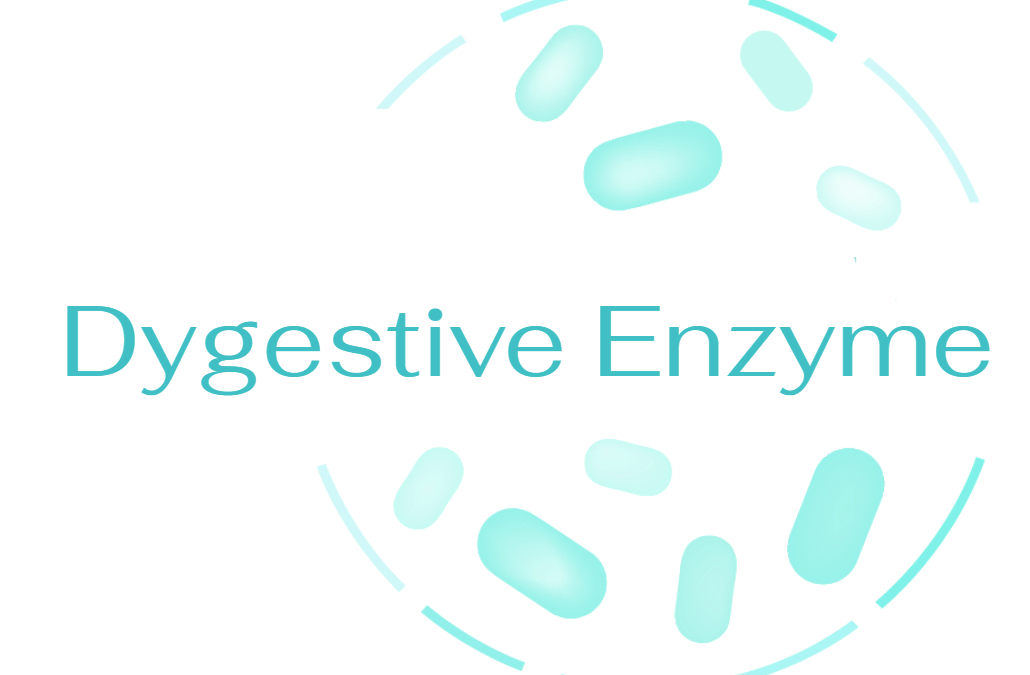
Digestive enzymes
Naturally occurring digestive enzymes break down food and aid digestion.
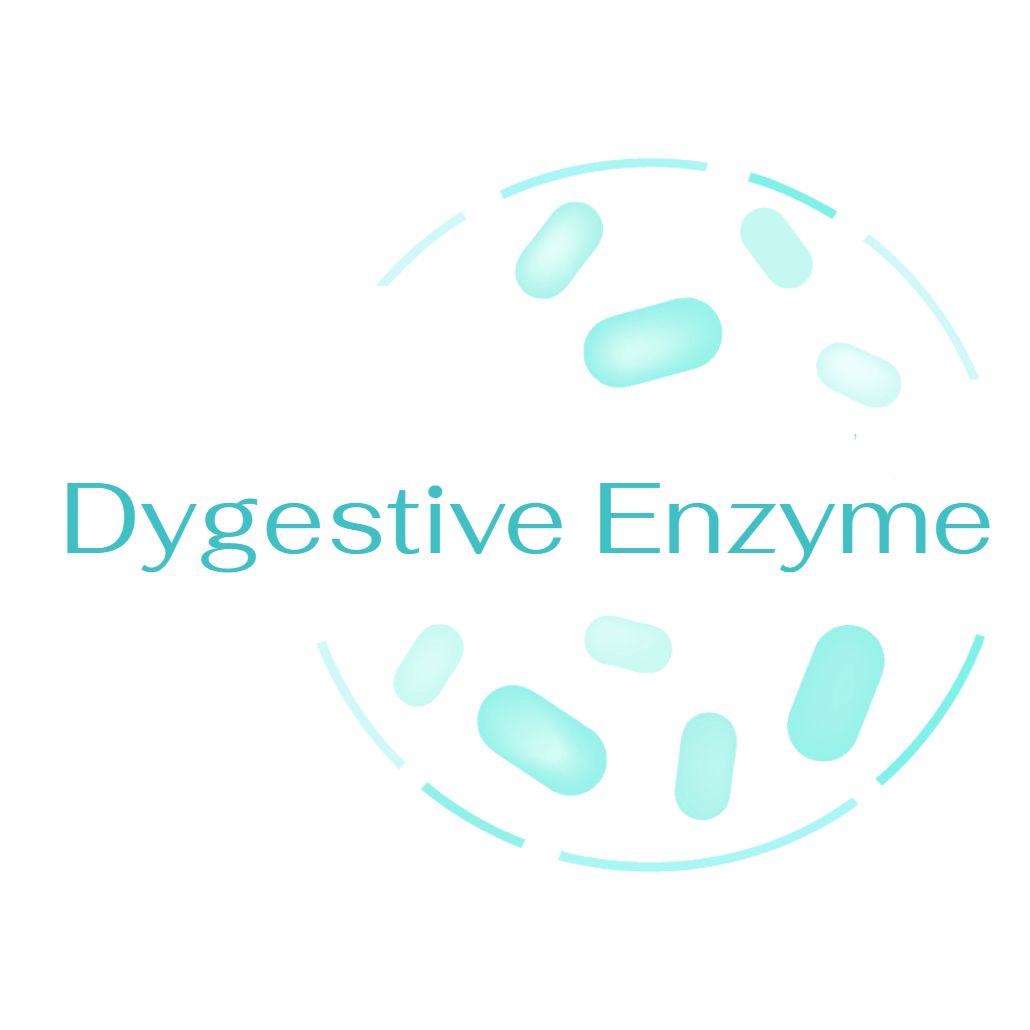
During digestion the nutrients found in food are broken down to give your body energy, help to perform vital functions.
If you have enzyme insuffiency your body cannot break down food properly, undigested food begins to ferment in the intestines which causes bloating and other abdominal complaints.
Digestion
Digestion begins in the mouth, your saliva starts breaking down food right away into a form that can be absorbed by the body. Your stomach, small intestine and pancreas all make digestive enzymes as well.
The pancreas produces the most important digestive enzymes, which are those that break down carbohydrates, proteins and fats.
The main digestive enzymes made in the pancreas include:
Amylase (made in the mouth and pancreas; breaks down complex carbohydrates)
Lipase (made in the pancreas; breaks down fats)
Protease (made in the pancreas; breaks down proteins)
Some other common enzymes are made in the small intestine, including: Lactase (breaks down lactose), Sucrase (breaks down sucrose)
Symptoms of Digestive Enzyme Insufficiency
Digestive enzyme insufficiency can lead to malnutrition or gastrointestinal irritation. Common symptoms include:
- Belly pain or cramps
- Bloating
- Diarrhea
- Gas
- Oily stools (bowel movements)
- Unexplained weight loss
- Constipation

